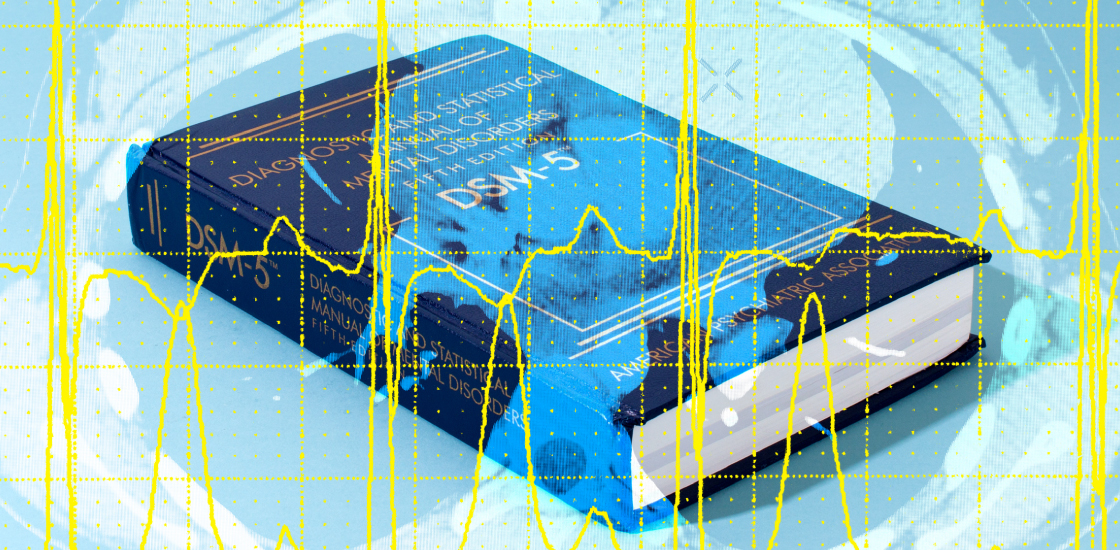U.S. institute maintains support for diagnoses based on biology
A 2013 initiative to find biological roots for mental health diagnoses still has broad appeal, but has not produced a dramatic shift in autism research.

Weeks before the release of the DSM-5, the current edition of the “Diagnostic and Statistical Manual of Mental Disorders (DSM),” the organization that funds much of the mental health research in the United States dropped a small bombshell: It would shift away from funding projects based on DSM diagnoses.
Instead, Thomas Insel, then director of the National Institute of Mental Health (NIMH), announced in a blog post that the institute would prioritize projects that investigate the biological processes underlying mental health conditions.
Rather than studying individuals diagnosed with schizophrenia or autism, for example, researchers would study social cognition or face perception across multiple diagnoses.
Most scientists lauded the principles underlying the framework, called Research Domain Criteria (RDoC), as recognizing the complexity and heterogeneity of mental health conditions. But some autism researchers feared that the agency’s rejection of DSM categories would jeopardize insurance coverage for autism treatments. Others critiqued the framework for its failure to account for the psychological changes that occur over the course of development and its lack of emphasis on behavior.
Five years later, many of those concerns have come to naught, in part because the agency continued to support research based on the DSM.
“We’ve never required the investigators to adopt the RDoC approach,” says Sarah Morris, associate director of the RDoC Unit at the NIMH. “We supported it and we encouraged it, but we never stopped funding research that was focused on DSM disorders.”
Still, RDoC continues to build momentum.
Since 2016, when the NIMH Division of Translational Research began tracking statistics on RDoC, about half of the grants funded through the division have used the framework. (No figures are yet available for the proportion of NIMH grant proposals these successful ones represent.)
Good fit:
“The spirit of RDoC” — the idea that biomarkers might occur across diagnostic categories — is well accepted among autism researchers, says Elise Robinson, assistant professor of epidemiology at the Harvard School of Public Health. The approach is “enormously important for a disorder that’s as heterogeneous as autism,” she says.
The initiative also fits well with many researchers’ long-standing priorities.
“I’ve always had this approach. Now I can just lay it under the framework of RDoC,” says Jane Roberts, professor of psychology at the University of South Carolina. Roberts’ work makes use of biomarkers such as heart rate and stress response to understand fragile X syndrome, a genetic condition related to autism.
“Being able to leverage and say that I use RDoC is an advantage when you’re putting in a grant and when you’re writing about your findings because that whole framework is sort of seen as representing an advanced way of thinking,” Roberts says.
Clinical psychologist Cora Taylor is documenting the characteristics of individuals with deletions or duplications of large stretches of DNA across multiple mental health diagnoses. “RDoC fits very cleanly, I think, with the kinds of grants that we’re doing,” says Taylor, who works at the Autism and Developmental Medicine Institute in Lewisburg, Pennsylvania.
The program isn’t universally endorsed, however. RDoC comprises a ‘matrix’ that suggests particular biological elements for investigating five domains of thought and behavior, but the rationale behind including the individual elements is not well understood.
“It’s a little unclear to some people how the specific molecules, cells, circuits, behaviors were chosen and why,” Robinson says. As a result, some autism researchers may conclude that the program isn’t relevant to their work, even though they support its overall aims, she says.
Hypothesis testing:
RDoC’s impact is also limited because the NIMH is the only grantmaking agency that uses the framework.
“Unless you’re putting in an NIMH proposal, nobody else is talking RDoC,” says Eric London, director of the Autism Treatment Research Laboratory at the New York State Institute for Basic Research in Developmental Disabilities.
Success rates for NIMH grant applications have declined over the past decade and a half, prompting some researchers to look elsewhere for funding. “Everyone is just sort of doing what is practical,” London says.
The upshot: The NIMH may not have the power to set the research agenda that it once did.
Some researchers sense that even the NIMH’s commitment to RDoC has petered out since Insel left in 2015 for a job with Google.
“I like the idea a lot. And I don’t know if it will be maintained with Insel gone,” says Jeanne Townsend, director of the Research on Autism and Development Laboratory at the University of California, San Diego. “It doesn’t look like they’re focusing that way so much anymore.”
In a message last June, the then-new NIMH director, Joshua Gordon, reframed RDoC as a “hypothesis” that research organized around biological and clinical characteristics rather than around diagnoses will lead to a better understanding of mental health conditions.
That update did not, however, signal a big change in the institute’s grantmaking approach, and the NIMH remains committed to RDoC, Morris says.
The first inklings of how much RDoC will advance our understanding of mental health conditions should soon arrive, Morris says. Grants from the first call for RDoC proposals received funding in late 2012, and some of that research is now being published.
“Those papers are just starting to come out; now is the time for us to look and see those results and evaluate the extent to which they are supportive of the overarching RDoC hypothesis,” she says.
Recommended reading

Too much or too little brain synchrony may underlie autism subtypes

Developmental delay patterns differ with diagnosis; and more

Split gene therapy delivers promise in mice modeling Dravet syndrome
Explore more from The Transmitter

During decision-making, brain shows multiple distinct subtypes of activity

Basic pain research ‘is not working’: Q&A with Steven Prescott and Stéphanie Ratté
